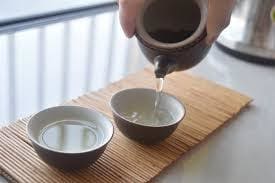
Do You Really Need to Preheat Your Mug or Teapot?

It’s really easy to get complacent when it comes to daily routines. We’ll leave our freshly laundered clothes lying around an extra day or two; we’ll worry about our kitchen cleanup in the morning; and sometimes we’ll even (gasp!) occasionally go to sleep without flossing!
It’s not hard to take these sorts of things for granted, and on especially lazy days, we might even extend these “shortcuts” into our tea drinking, convincing ourselves that it doesn’t change much. We’ll let our tea leaves sit out a little too long, or we’ll decide it’s a better day for a stainless steel infuser basket instead of a gaiwan.
And yet, one of the first things impressed upon new tea drinkers is the importance of preheating the teaware. This is even something that we can observe during the performance of gongfu tea ceremonies. The practitioner will fill their gaiwan or Yixing teapot with hot water, pour it into the tea cups, and then empty the tea cups into a bowl.

But this raises a question: does it really matter? In other words, whether we’re using a tea mug or a tea cup, a teapot or an infuser basket, is it really that important to preheat our teaware?
Almost all of us have done this at one point or another. The ecologically minded might feel guilty that we’re wasting water with a preheat; and let’s face it, preheating is an extra step that uses just a little more time and attention than we care to afford. Perhaps even after skipping it once, you come to the conclusion that it didn’t make much of a difference, verifying that it’s an expendable step.
Unfortunately, we’re here to emphasize the importance of preheating teaware.
Why does this little step matter?
We’ve addressed in some of our previous tea blogs how different phytochemicals are extracted from the tea leaves at different temperatures over varying periods of time. For a brief synopsis, you can always revisit this post. The short end of it, however, is this:
recommended steeping temperatures are recommended for a reason
The reason that we include the temperatures on the instructions is that it is these temperatures in particular that tend to bring out the best flavors of the tea, helping ensure that your tea drinking experience is just right.
For an experiment, you can always try steeping a cup of dragonwell green tea at 205°F (95°C) alongside another at 175°F (80°C). Upon doing so, you might note how the tea brewed at the higher temperature will yield more of a bitter flavor. Conversely, our black teas are usually better at higher temperatures, right off of a boil, tasting much weaker at 175–180°F (80°C). All of this has to do with the chemical composition of the tea you’re trying to make, and how these chemicals respond to temperature as they are extracted into the water.
What the act of preheating does is prevent any sudden, rapid temperature change when your freshly heated water is poured into your teapot or tea mug, which would otherwise effectively lower the desired temperature of your infusion. This is less of a concern with green teas (although it still makes a difference), but it definitely negatively impacts your oolongs, black teas, and pu erhs.
To help put this into perspective, we conducted our own experiment. After heating our water to 205°F (95°C), we poured it into a teapot that was sitting at room temperature. Shortly thereafter, we poured it once more into a porcelain tea cup before quickly measuring the temperature. Within 15 seconds, our 205°F (95°C) water had dropped to 170°F (75°C)!!! Had we been preparing some black tea for a guest, we would have been infusing it at temperature best suited for a green tea, making for a very poor tasting black tea.
While it’s tempting to skip some of our steps when preparing our teas, let’s not make preheating one of those steps. Unless we have a properly trained palate, we may not notice the difference it makes in isolation, but a side-by-side comparison with a properly heated vessel can help us appreciate just how much we’re shortchanging ourselves by hastening our preparation at the expense of preheating.
